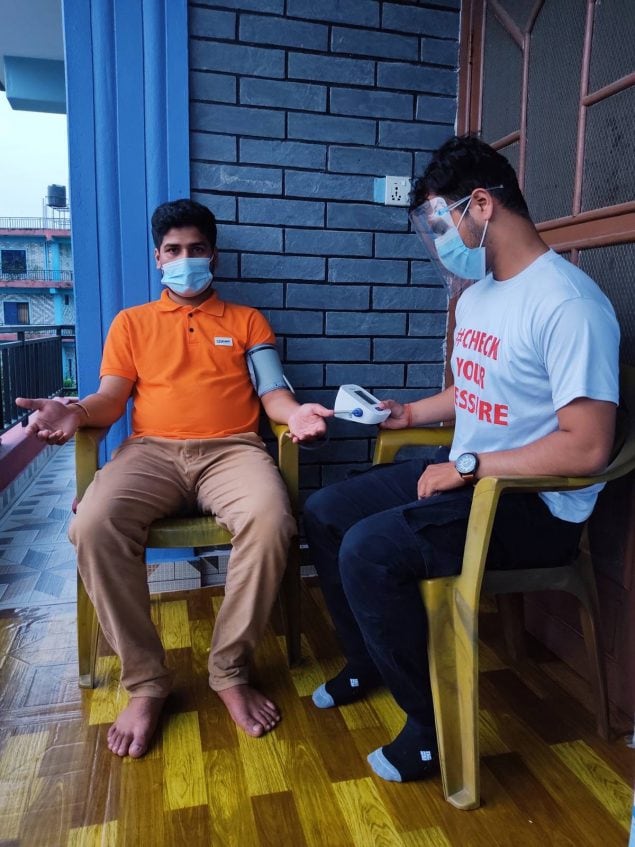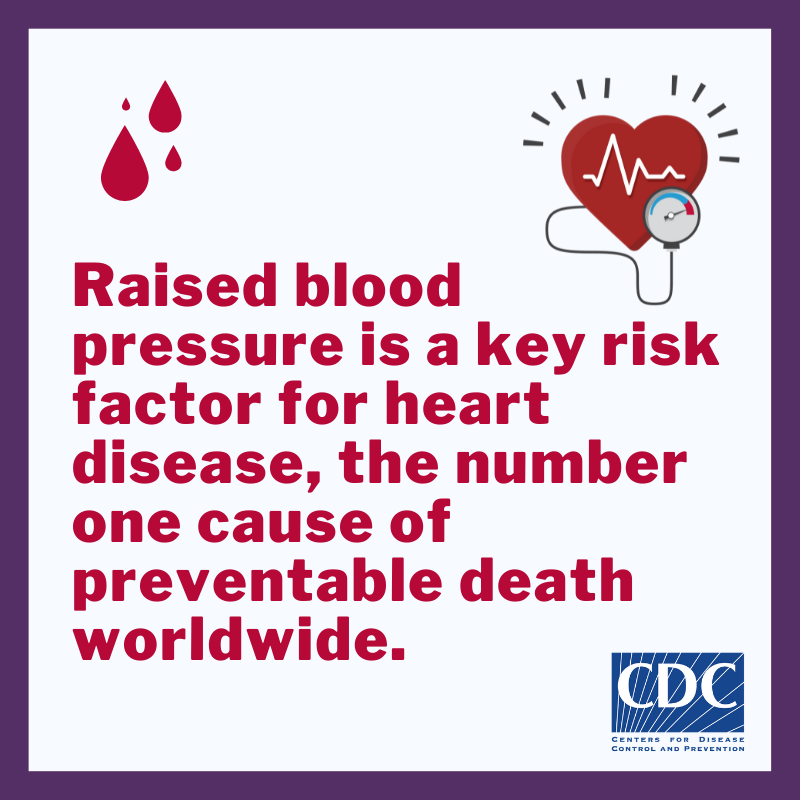Breaking Hypertension Screening Records in Nepal: A Formula for Success
September 27, 2021

A volunteer from western Nepal measuring blood pressure while following COVID-19 safety protocols. Photo: Nepal Development Society
High blood pressure, or hypertension, affects an estimated one billion people worldwide. Left uncontrolled, high blood pressure can lead to heart attack and stroke, and it also increases the risk of people becoming sicker if they get COVID-19. According to the World Health Organization, nearly 30% of premature deaths in Nepal are caused by cardiovascular disease, with 4.7 million adults living with hypertension. Of these, 4.5 million do not have their hypertension under control. Nepal shows how countries can raise awareness of this issue and improve care for people with high blood pressure.
The Nepal Development Society (NeDS), a local NGO, partnered with the International Society of Hypertension (ISH) on May Measurement Month (MMM), the largest annual blood pressure screening program in the world. MMM aims to increase blood pressure awareness and make screening easier for people to find. While COVID-19 formally cancelled MMM in 2020 and delayed it in 2021, Nepal continues to hold hypertension screenings when possible and while following COVID-19 precautions. Since 2018, Nepal’s program has trained volunteers including female community health volunteers (FCHVs, a type of community health worker within the Ministry of Health in Nepal) to provide screening and basic health education on hypertension to thousands of participants. Nepal demonstrates five important steps for successful hypertension screening.
Campaign organizers set up free blood pressure screening sites at public places such as temples, supermarkets, shopping malls, banks, and parks to reach more people. Volunteers also provided in-person, at-home screening, and NeDS staff offered telehealth screening for hypertension over the phone.
Despite the challenges posed by COVID-19, such as country lock downs and limited in-person screening and training, the Nepal campaign trained over a hundred volunteers (they have already mobilized more than 700 volunteers in MMM) and screened nearly 18,000 participants from January to May 2021.
“Much of the program’s success was due to the support of health professional societies, student organizations, and government health officials, who are actively involved in many screening sites,” said Dinesh Neupane, who coordinates Nepal’s MMM activities for ISH. Neupane is affiliated with Johns Hopkins Bloomberg School of Public Health where he contributes to Resolve to Save Lives initiatives. “The screening sites in parliament house and other government offices brought a lot of media attention about blood pressure screening. Even the former prime ministers and multiple government officials and members of parliament participated.”

In addition to supporting this campaign that greatly expanded hypertension screening, NeDS is exploring multiple ways to improve how people receive care when they are diagnosed with high blood pressure. In 2020, they established Nepal’s first noncommunicable disease (NCD) “corner” at the Shishuwa Hospital, a primary care level hospital. The corner (actually a small room) serves as a link between FCHVs and the health facility, distributes education materials, and provides counseling about correctly taking medicine and leading a healthy lifestyle. While COVID-19 forced this site to temporarily close, NeDS plans to begin this service again soon.
During the pandemic, volunteers did telephone interviews with people diagnosed with hypertension during previous screening campaigns to understand the reasons people did not seek care. These interviews will be repeated to gain a better understanding of the reality people face and help create solutions. To gain additional information on NCDs and cardiovascular disease and risk factors in Nepal, NeDS and their partners are studying how community health workers can better help people get care when needed after hypertension screening. They have also established a group of 3,000 households for scientific research studies, and to design and evaluate future programs for reducing cardiovascular disease.
NeDS has been working to prevent, detect, and control hypertension in Nepal since 2013. In response to lessons learned and in partnering with MMM, NeDS has now taken efforts to strengthening their efforts even further by expanding screening to all provinces in the country, becoming the first organization in Nepal to train volunteers to screen blood pressure during home visits and provide counselling. They also reinforced their collaborations with high-level supporters and raised awareness through media coverage.
The progress over time is clear: in 2017, they conducted nearly 6,000 hypertension screenings; by 2019, that number jumped to 75,000 screenings, which was much higher than their goal of 50,000 screenings. That year, in the MMM campaign, Nepal was in the top five of 92 countries for absolute number of screenings, and the number one country for screenings per population.
“Through innovative approaches, the invaluable contribution of volunteers, and strong government commitment, Nepal has successfully demonstrated how to expand hypertension screening and care to those who are at risk of cardiovascular disease,” says Professor Neil Poulter, Chief Investigator, MMM. Maintaining healthy blood pressure promotes cardiovascular health, and Nepal’s formula for success is leading the charge by rolling up one sleeve at a time.